Milkweeds are pretty easy to grow, but we watch out for the following things.
Spring: Don’t think it’s dead
Milkweed doesn’t start growing as early as other plants in the spring. The first year we grew it, we thought it hadn’t made it through the winter. Not so! It generally survives the winter quite well — it’s just a little lazy coming up.
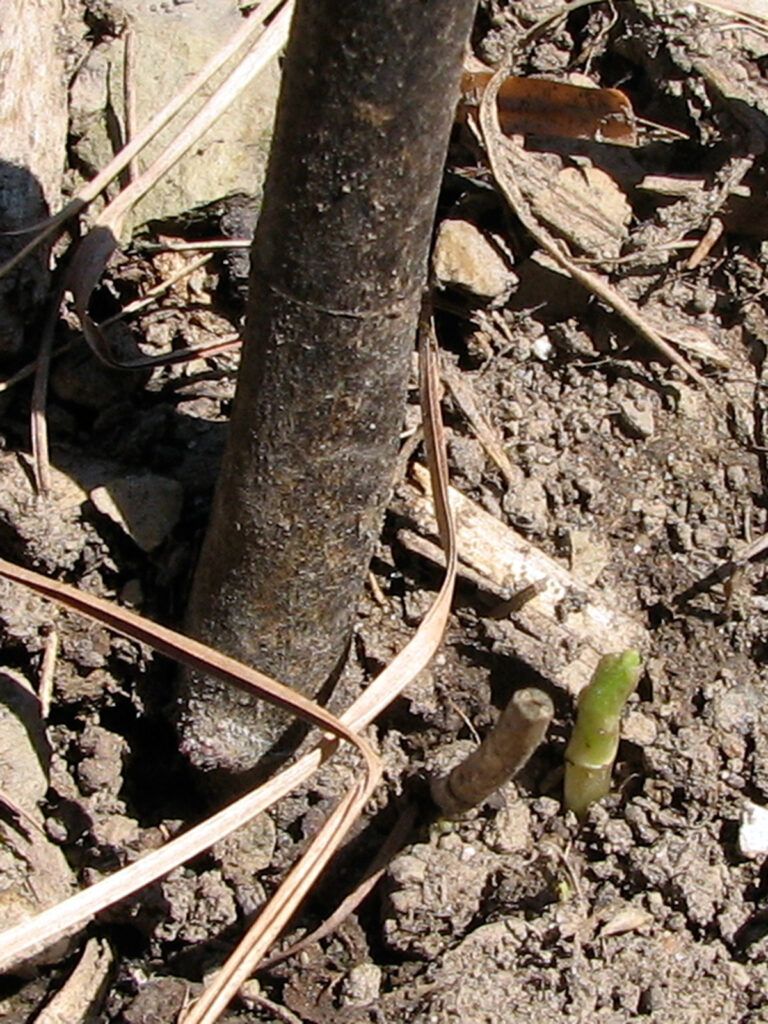
This photo was taken on May 8, a time when many other plants were already up and had been growing for a while.
Note the little green shoot just starting to grow at the right of the stalk.
We leave at least some of the previous year’s stalk (as seen in the photo) throughout the winter as a marker so we know where to look for it coming up in the spring.
A bonus of leaving the stalks is that I’ve seen its hollow stem used by birds as a place to cache seeds or insects. I’ve also seen birds stripping the fibers off the stalk in the spring to use as a nesting material.
Herbicides
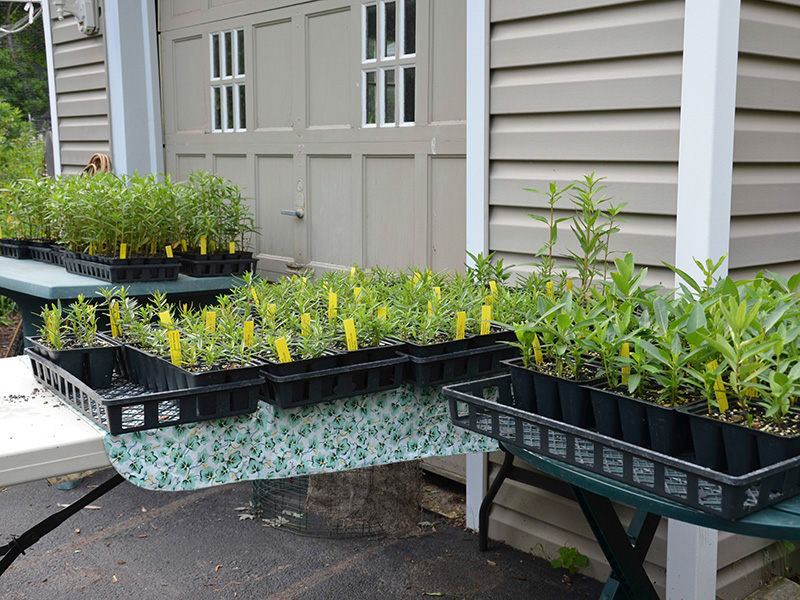
Most alarming is that the Xerces Society has found that milkweeds purchased in retail nurseries often have pesticides harmful to monarchs. Not what you want when you’re buying milkweed!
Our Wild Ones chapter has sold milkweeds from our local native plant nurseries since we can be confident they aren’t using pesticides.
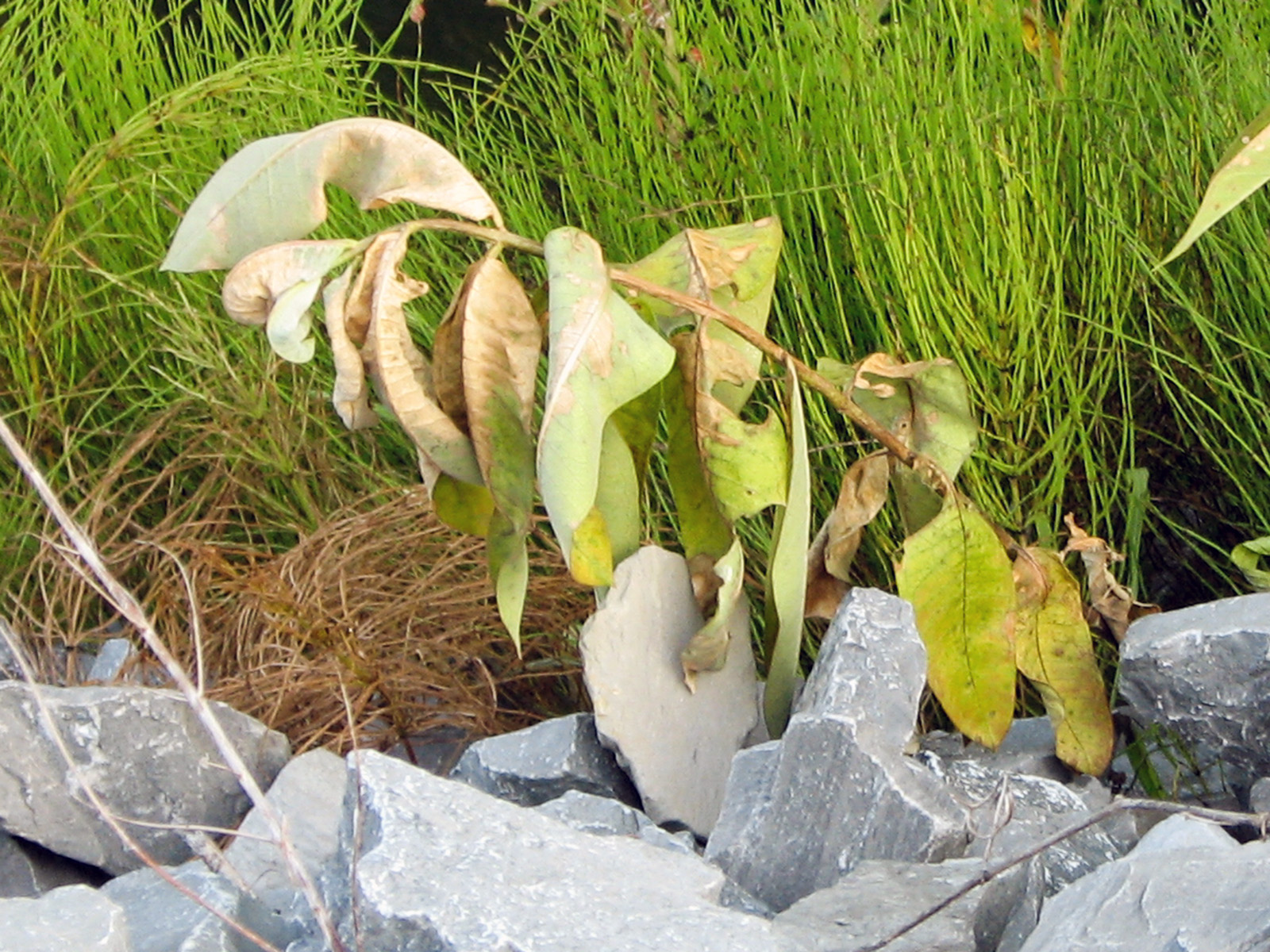
Of course, herbicides will kill any plant. The problem for milkweed is that it’s often growing in places where highway departments or maintenance people are used to thinking of it as a “weed” and eradicate it. Spraying herbicide, as happened near my local shopping center parking lot, is a quick way to make roadsides look “neat.” I can only hope that there were no eggs or caterpillars on the milkweed when it was sprayed. I now try to check the milkweeds in this area when I shop there and rescue any eggs or caterpillars before they get sprayed.
And apart from the impact on the milkweed, this parking lot is adjacent to a stream. I’m sure whatever they’re spraying on the weeds at the edge of the parking lot is also reaching the stream, which ultimately flows into Onondaga Lake. Surely this must be illegal!
Milkweed herbivore: Aphids
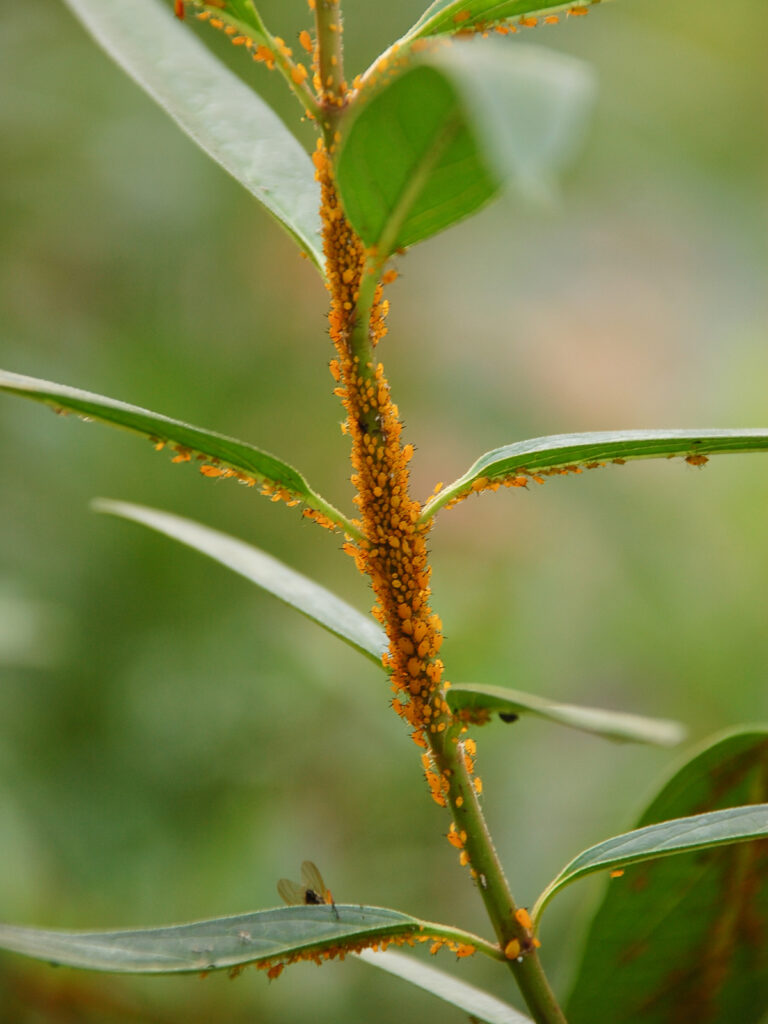
By the end of the season, we end up with oleander aphids on our milkweeds. Oleander aphids are non-native pests, introduced from the Mediterranean region.
They don’t seem to be a problem earlier in the season, and some years seem worse than others, but they can certainly make the plant less attractive and can weaken it.
One way to get rid of the aphids is to put on gloves and rub your hands along the aphid-covered stems. And some people blast plants with water as a non-toxic way of ridding plants of aphids — BUT I wouldn’t want to do that on milkweeds. There could be tiny monarch caterpillars blasted away with the aphids! The monarch eggs and first instars are really TINY!
And if you’re lucky you may notice aphid parasitoid wasps or aphid “mummies” where adult wasps have laid their eggs, using the aphid as their “baby food.” Xerces Society recommends encouraging these wasps by planting milkweeds among other nectar-rich wildflowers with shallow flower surfaces, such as mountain mints, goldenrods, asters, or New Jersey tea. (More info in Resources below)
Milkweed herbivore and predator: Small milkweed bug
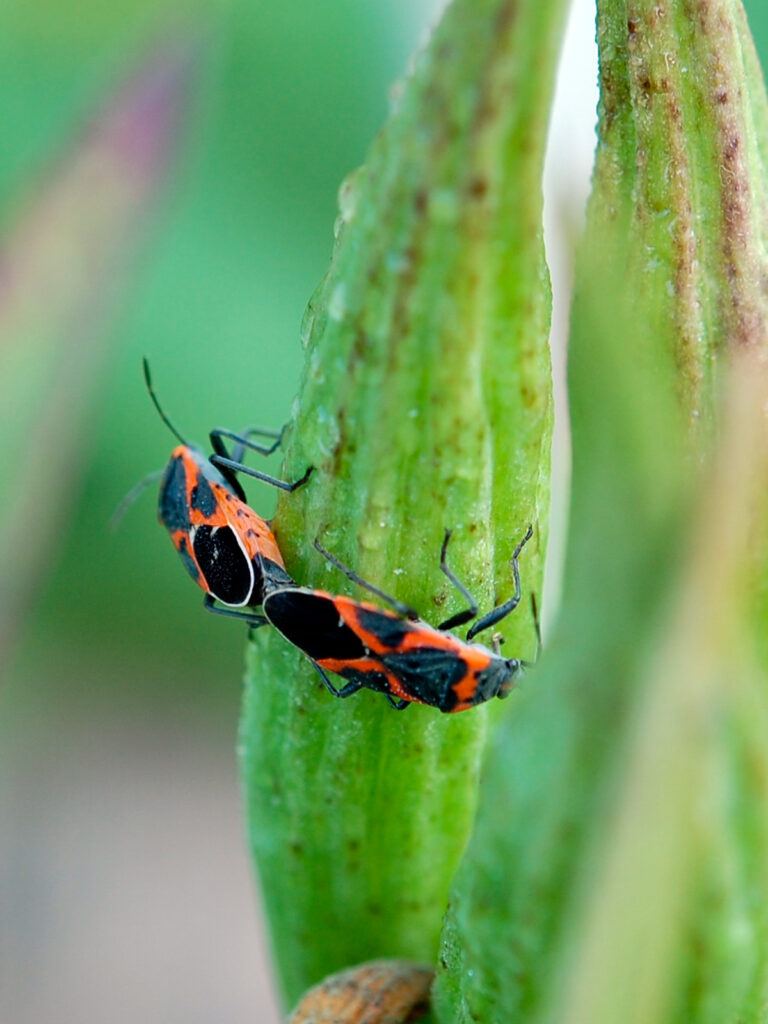
The preferred food of the small milkweed bug (Lygaeus kalmii)? Milkweed seeds! They also eat caterpillars or even the chrysalides. We have quite a few of these bugs, but probably not out of balance.
They haven’t been too much of a problem, though, since I have more than enough seeds even if they eat some.
As a native insect, it has evolved with milkweeds. The issue, again, is that we need more milkweeds, closer to the historical numbers, not fewer bugs that eat milkweeds!
Milkweed herbivore: Tussock moth

I found this odd thing on the bottom of one of my common milkweed plant leaves.
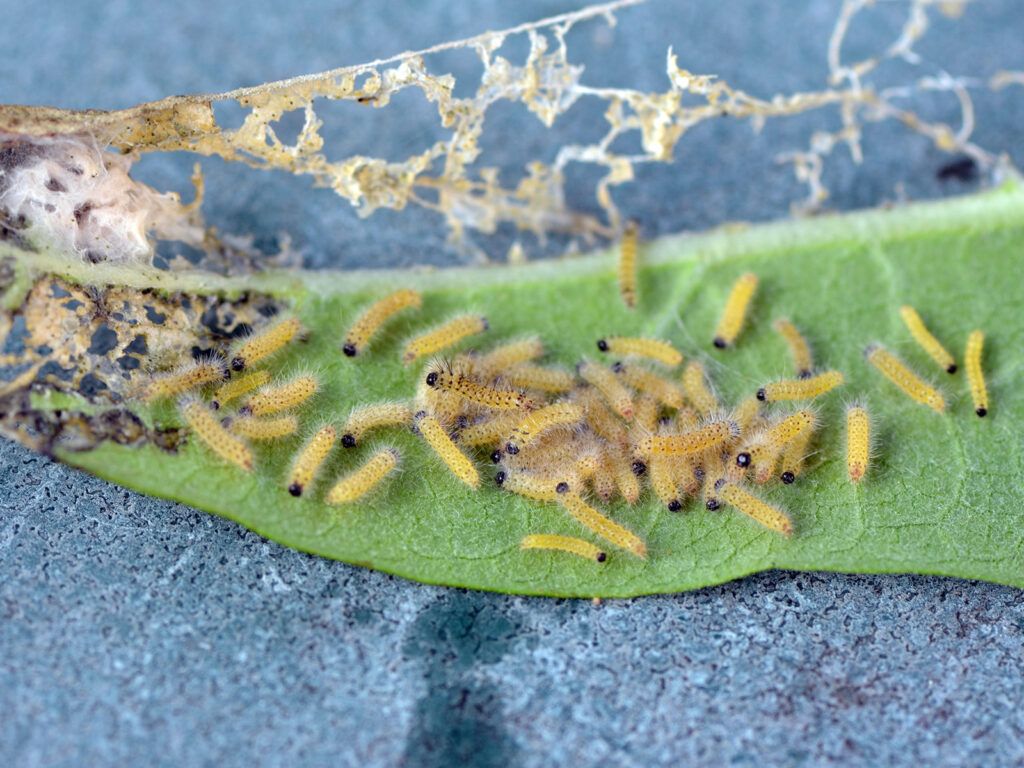
On another leaf, I saw this mass of little caterpillars. I sent the photos to BugGuide.net, and in just a few hours, I got the answer.
The little caterpillars were the first instar of the tussock moth caterpillars. The white structure in the photo above is their egg mass.
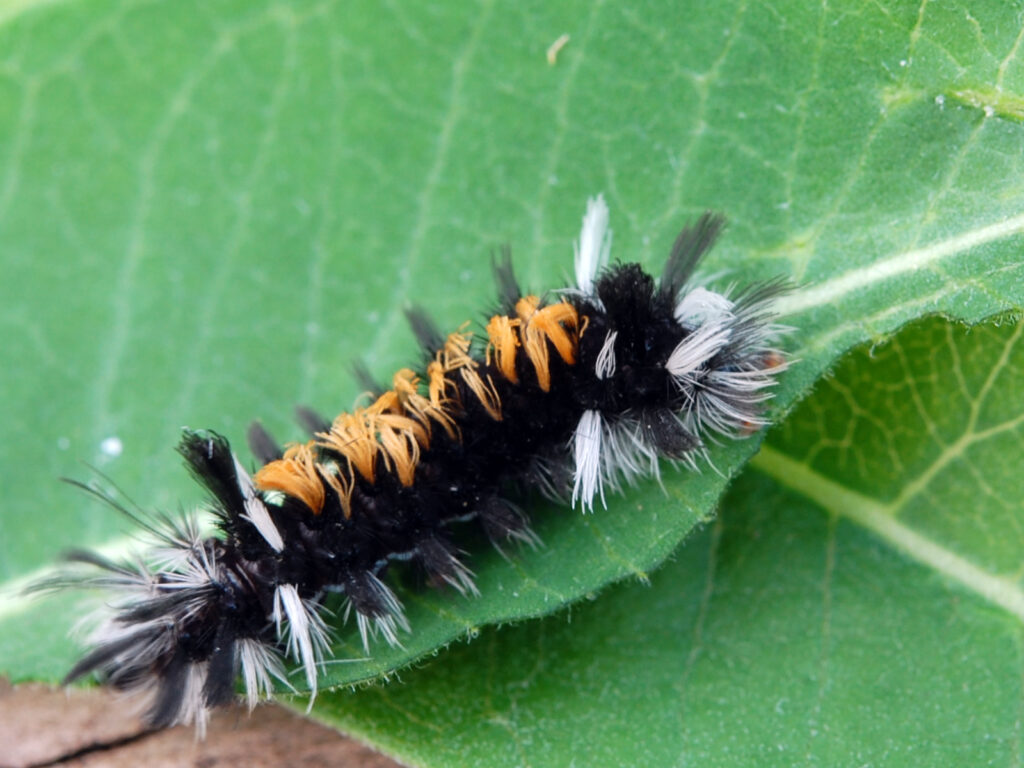
Then I remembered I had seen tussock moth caterpillars on my milkweeds before.
What to do with this native caterpillar? I’ve generally left tussock caterpillars even though they eat the leaves, but I keep my eye on them.
As native caterpillars (destined to be moths) they belong in this ecosystem as much as other insects, including monarchs. The problem, again, is not enough milkweeds! And this is a problem caused by humans, not insects!
Milkweed herbivore: Swamp milkweed beetle
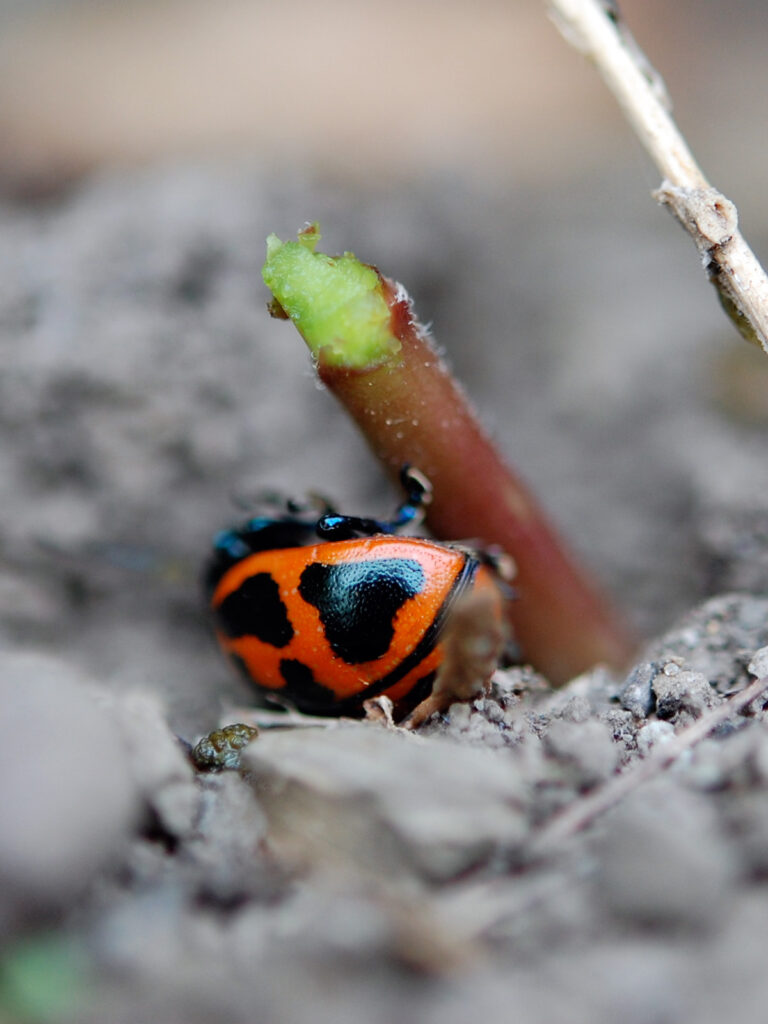
In our yard, we’ve been seeing the swamp milkweed beetle (Labidomera clivicollis) more and more, and I often seem them eating the milkweed plant as soon as it emerges.
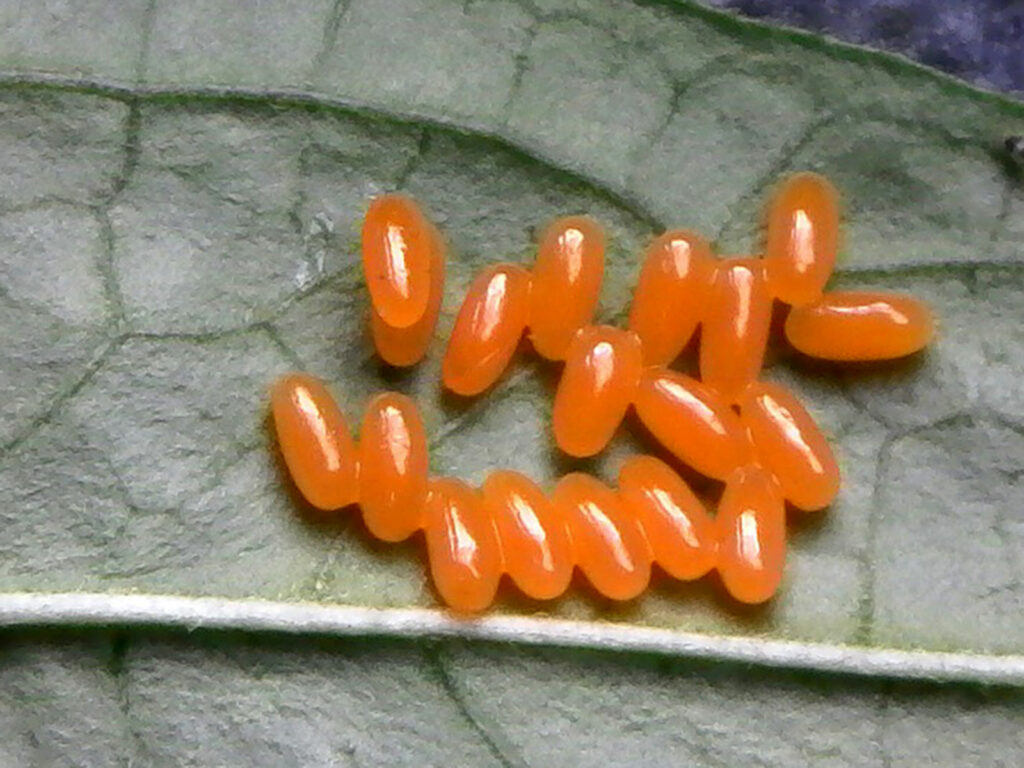
I find clusters of these orange eggs on the bottom of the swamp milkweed leaves.
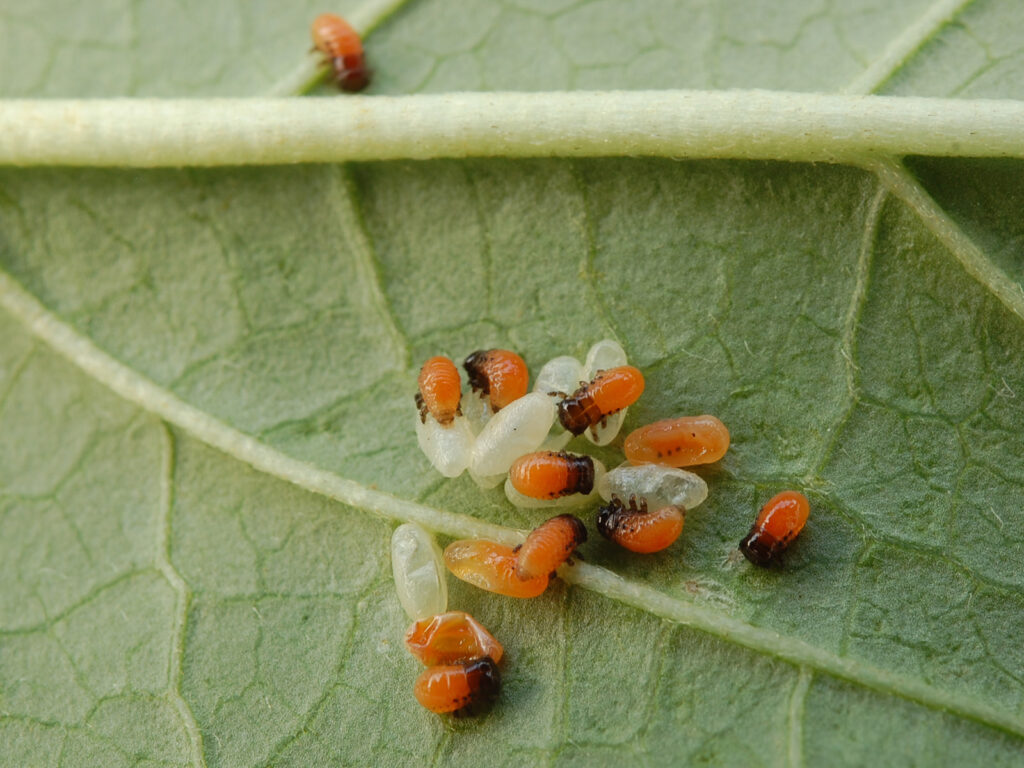
Here they’ve just hatched. Note the veins of the leaf to get an idea of their size. They’re pretty small at this stage of their development.
As I’ve grown more and more milkweeds, losing a few hasn’t been a problem so I’m not as often removing these.
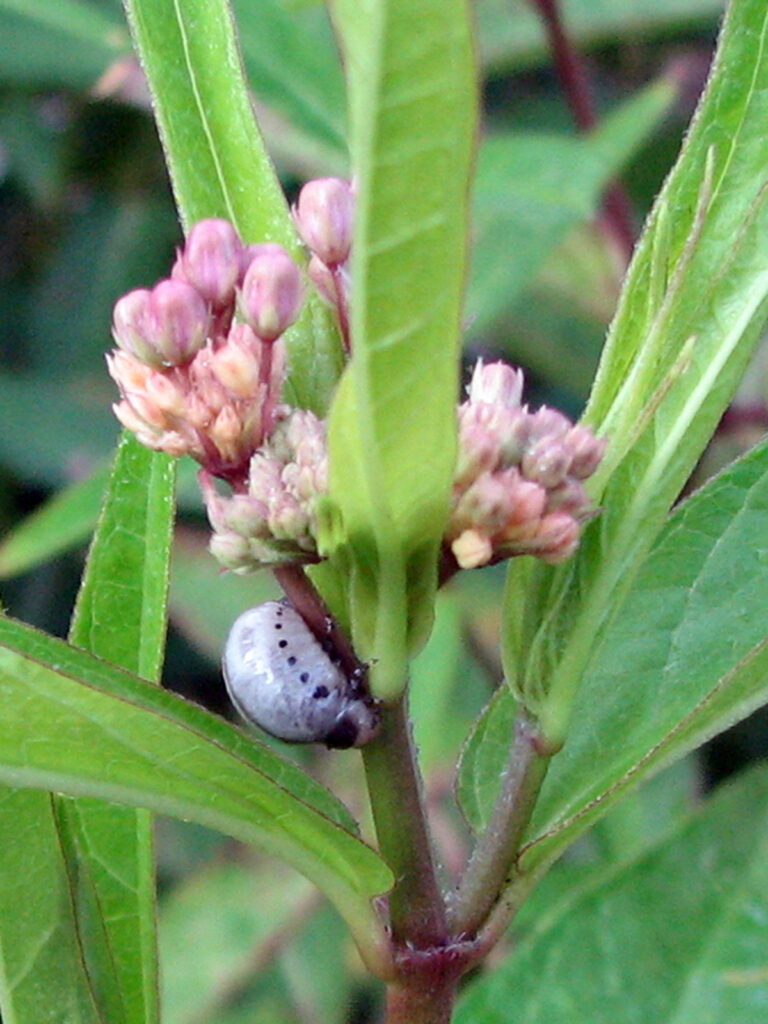
This is the larva of the milkweed beetle that was eating so many of our plants.
So far, we seem to have plenty of milkweeds despite the beetle.
Milkweed Yellows (Phytoplasma)
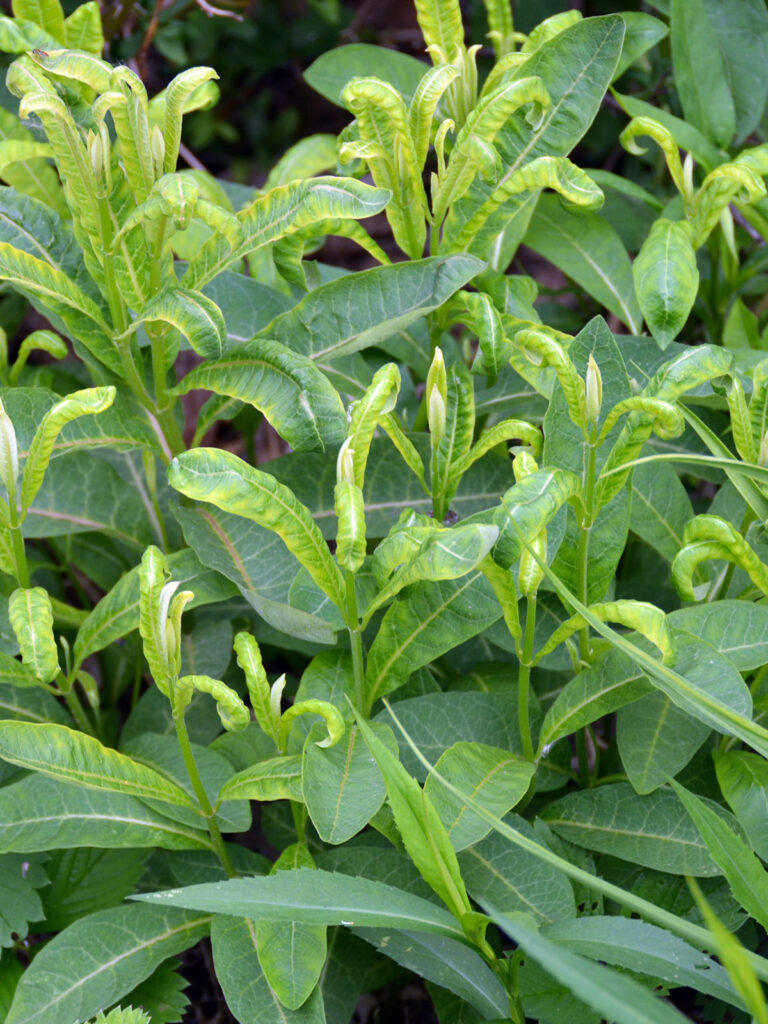
I was alarmed one year when I started having strange-looking milkweeds.
Fortunately, I asked an expert about it, and he said he was afraid I had “milkweed yellows” or phytoplasma to be more technical. He said it was spread by leafhoppers from plant to plant.
This was very depressing to say the least.
I finally had the courage to pull out the affected plants — a fairly large percentage of all my milkweeds — stuff them into a black trash bag, and discard in them in the trash (NOT the compost pile and NOT the town yard trimmings pickup since I don’t want to spread this).
The following year, I still had to monitor my yard closely and pull up any that looked the least bit strange. But the good news is that I think I caught it fast enough and now my remaining milkweeds look fine as do the new plants I started.
Just as alarming, on one of our Wild Ones chapter field trips to a local natural area, we found this problem in a few places in an otherwise wonderful monarch breeding area. The steward of the property said he would remove all the infected milkweeds. I hope he caught it soon enough!
I still watch for any problematic leaves each year and destroy these milkweeds. Since we usually find lots of milkweed seedlings growing, which I save and transplant, I’m able to keep ahead of this problem.
Resources
- The Xerces Society:
- Milkweeds: A conservation practitioner’s guide – includes info on pests and diseases
- Milkweed FAQs
- Harmful pesticides found in milkweeds from retail nurseries
- Monarch Joint Venture:
- Univ. of Maryland Extension:
- Aphid parasitoid wasps – They’re your friend — don’t eliminate them!
- National Geographic:
- Parasitic wasps and aphids – a 2-min video
- L.A. Times:
- Univ. of Wisconsin Horticulture Extension:
- Colorado State Univ. Ext.:
- Insect Control with Soaps and Detergents – But if you choose to control for aphids, check first for monarch eggs and caterpillars!
- Hilton Pond:
- Assault on swamp milkweed – a variety of insects
Reflections
It is also true that what an insect can eat is what it must eat. Therefore planting an aphid’s or a butterfly’s host plants will summon it from the sky. Gardeners may shudder to think of advertising for aphids, but the necessity is inescapable and, in natural plantings, the increase in sucking insects is hardly noticeable.
~ Sara Stein, Noah’s Garden: Restoring the Ecology of Our Own Back Yards, 1993, p. 112
